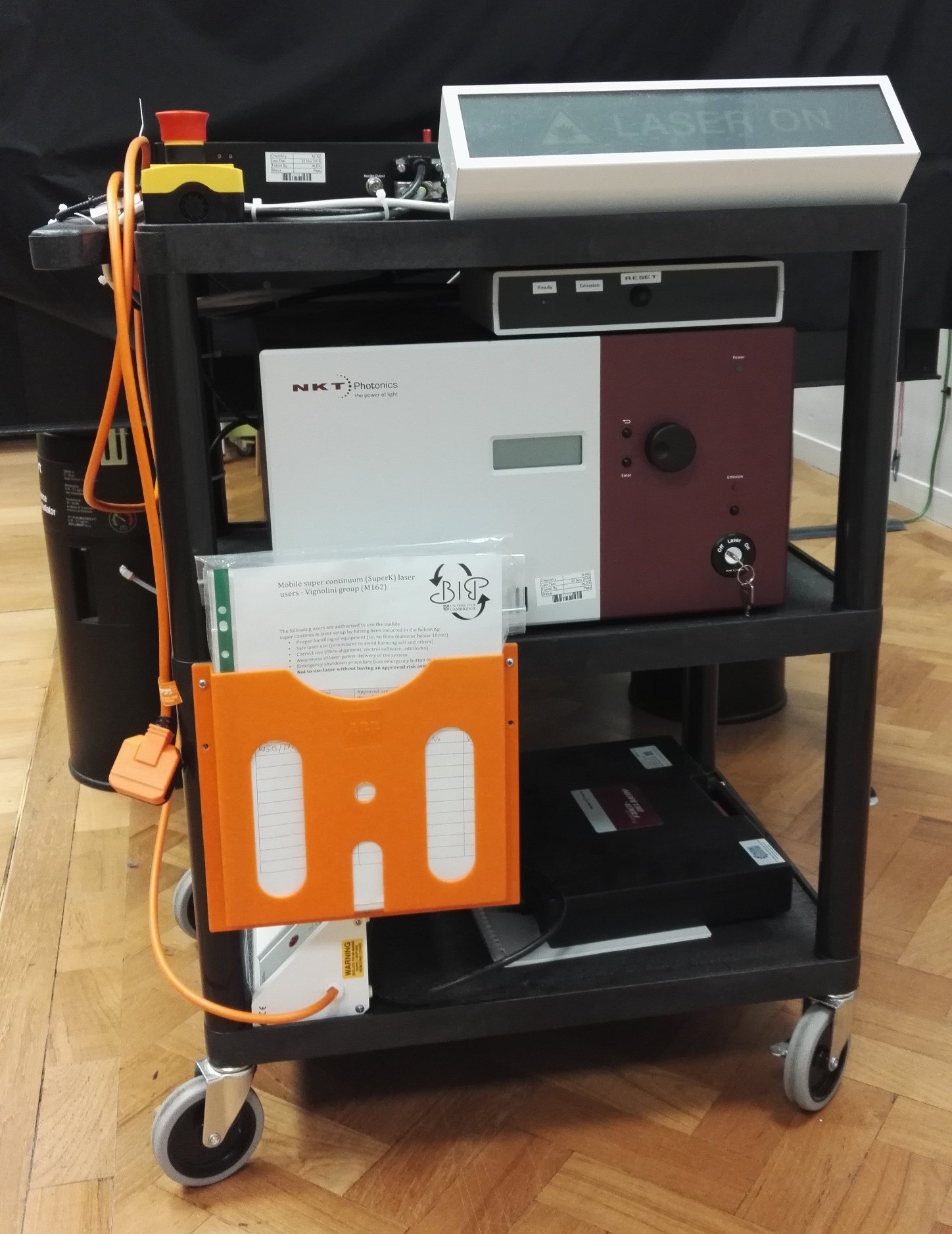Optical goniometer
By this method, a collimated beam from a light source illuminates the sample at a certain angle (which is varied by rotating the sample) and the scattered light in reflection and transmission is collected at different directions (by rotating a detector arm, see following video).
Conoscopic imaging
Conoscopic imaging and spectroscopy are performed using a microscope equipped with a Bertrand lens. In this configuration, it is possible to access the directionality of the scattered beam, i.e. to directly image the Fourier plane or the K-space distribution.
Confocal spectroscopy
Reflectance and transmittance measurements can be obtained both in bright-field and dark-field configurations using the halogen lamp of the microscope for illumination and an optical fibre mounted in the conjugate plane of the objective focal plane as a confocal pinhole. By varying the magnification and numerical aperture of the objective and the core of the fibre, a range of spatial resolutions can be obtained down to approximately 1 micron. This set-up also allows the insertion of additional optical elements into the beam path, such as polarizers or filters.
Motorised microscopy
The above microscopy methods can be enhanced by introducing motorised stages into the setup, which allows large-area scans and polarisation scan measurements. We developed a flexible software that enables automated measurements, which allows us to access detailed information of our materials. See the following video for more information.
Integrating sphere
The integrating sphere is a device for to measuring the optical radiation from a sample. It consists of a hollow spherical cavity whose interior is coated with a highly scattering material. The most useful application of the integrating sphere is the measurement of the total reflectance and/or transmittance of scattering materials.
Supercontinuum laser
We have an NKT superK Extreme EXU-6 with Varia filter that can be used with our setups as a versatile laser source covering the whole visible spectrum. The laser and filter can be controlled via Matlab using our in-house code, which is also available on github: github.com/villadsegede/NKTcontrol. The laser is on wheels so that it can be moved around between experiments.

